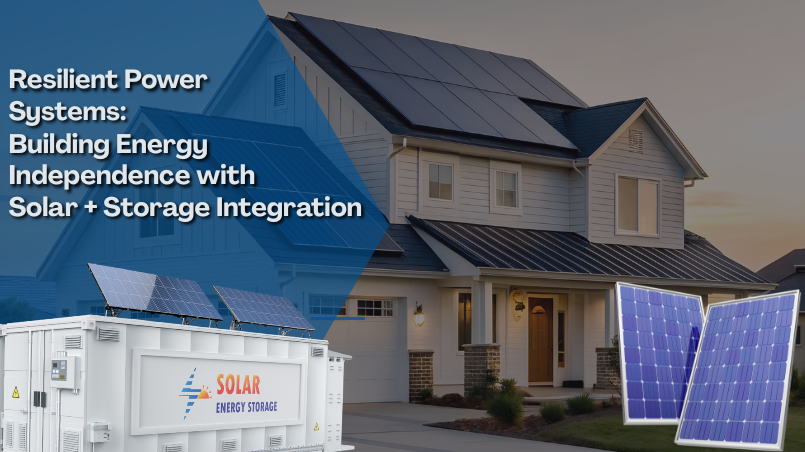How Solar Power Can Cut Your Electricity Bills by 70% in 2025
Have you noticed your electricity bills creeping up month after month? You're not alone. Many homeowners and businesses are feeling the pinch as energy costs rise. In 2025, solar power isn't just an eco-friendly option—it's a practical solution that can cut your electricity expenses by up to 70%.
Have you noticed your electricity bills creeping up month after month? You're not alone. Many homeowners and businesses are feeling the pinch as energy costs rise. In 2025, solar power isn't just an eco-friendly option—it's a practical solution that can cut your electricity expenses by up to 70%. At SunGarner, we've helped countless individuals make the switch to solar, enjoying significant savings and contributing to a greener planet.
Why Electricity Bills Are So High in 2025
India’s electricity tariffs have steadily increased over the years due to:
- Growing energy demand
- Rising coal and fossil fuel prices
- Infrastructure maintenance costs
- Taxes and surcharges on power consumption
Urban households and commercial establishments are paying ₹8–₹12 per kWh in many states. For medium to large homes or businesses, this translates to thousands of rupees every month.
Solar Power: A Game-Changer for Homeowners and Businesses
Solar panels convert sunlight into electricity using photovoltaic (PV) technology. This electricity can power your lights, fans, appliances, and machines. Any surplus can be stored in batteries or exported to the grid under net metering, further reducing costs.
With the support of government subsidies and declining panel costs, switching to solar in 2025 is not only affordable but also a high-ROI investment.
Here's how solar power can cut your electricity bills by up to 70%:
1. Reduced Grid Dependence
A well-designed rooftop solar system can meet 60% to 90% of your power needs, depending on your location, consumption habits, and system capacity. This slashes the units you draw from the grid, dramatically reducing your electricity bill.
2. Net Metering: Earn Credits for Surplus Power
Under net metering policies, any extra solar energy you produce and don't use is fed back into the grid. Your electricity provider gives you credits for these units, further reducing your monthly bill — in some cases to zero.
3. No Impact from Tariff Hikes
Once you install a solar system, your energy costs become predictable and stable. You’re shielded from future electricity price hikes, which are expected to continue in the coming years.
4. Battery Storage for Night Use
With hybrid solar systems or solar-plus-battery setups, you can store excess energy generated during the day and use it at night. This eliminates the need to rely on grid power altogether, making it possible to achieve up to 70% or even 100% reduction in your bill.
5. Accelerated Payback Period
In 2025, the average payback period for a residential solar system is 3 to 5 years. After that, you enjoy free electricity for the rest of the system’s 20–25 year lifespan.
Why Choose SunGarner for Solar Solutions?
SunGarner is a leading solar company in India, known for delivering high-quality, cost-effective solar power systems. Whether you're a homeowner, business owner, or industrial client, SunGarner offers:
Custom Solar System Design
We analyze your electricity consumption patterns and roof space to create a personalized solar solution that maximizes savings.
High-Efficiency Solar Panels
We use Tier-1, MNRE-approved solar panels that deliver top performance and durability — even in low-light conditions.
On-Grid, Off-Grid & Hybrid Systems
From net-metered residential systems to off-grid rural setups and battery-backed commercial installations, we cover it all.
End-to-End Services
From site survey, design, and installation to AMC and support — SunGarner takes care of everything.
Government Subsidy Assistance
We help you access applicable MNRE subsidies and state-level benefits to reduce your upfront cost.
Government Incentives in 2025
The Indian government is actively promoting solar adoption through:
- 40% subsidy on rooftop solar systems up to 3 kW (residential sector)
- Income tax benefits under Section 80-IA for commercial setups
- Net metering policies in most states
- Priority approvals and bank loan support for solar projects
SunGarner can guide you through the application process to ensure you don’t miss out on any incentive.
Final Thoughts
Switching to solar energy in 2025 isn’t just about reducing electricity bills — it’s about securing a cleaner, more sustainable future. With the right system and a reliable partner like SunGarner, you can cut your electricity expenses by up to 70%, protect yourself from rising energy prices, and do your part for the environment.
Frequently Asked Questions (FAQs)
Q. How much can I save with solar power in India?
A. You can save up to 70% on your electricity bills, and in some cases, eliminate them entirely depending on your system size and usage pattern.
Q. What is the average cost of installing a rooftop solar system in 2025?
A. Residential systems typically cost ₹45,000 to ₹55,000 per kW after subsidies. A 3 kW system can cost around ₹1.35 lakh (post-subsidy).
Q. How long does a solar system last?
A. Solar panels come with a warranty of 25 years, and the inverter usually lasts 8–10 years.
Q. Can solar panels work during cloudy days or at night?
A. Panels work at reduced efficiency on cloudy days. At night, solar systems with battery backup provide power from stored energy.









